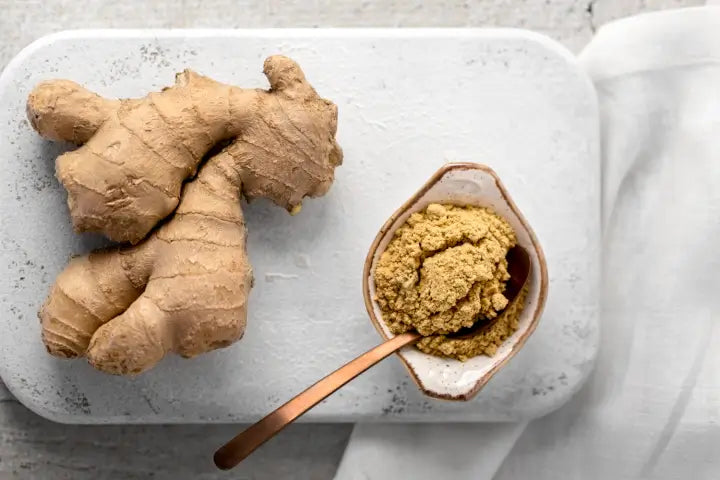Ginseng Powder Explained: A Natural Boost for Your Health and Vitality

The growing interest in natural supplements reflects a shift toward holistic wellness, and ginseng powder has emerged as a star player in that movement. Convenient, shelf-stable, and easily incorporated into daily routines, ginseng powder offers a fuss-free approach to unlocking centuries of traditional wisdom. This article dives into the essentials: defining what ginseng powder is, exploring its key components, listing notable ginseng benefits, weighing safety considerations, and sharing savvy tips for selecting a quality product. Whether curious about Ginseng Tea blends or keen to understand how long does it take to feel the effects of ginseng?, readers will find actionable insights to make informed choices for their vitality and well-being.
What Is Ginseng Powder?
Ginseng powder is a finely milled form of the root derived from plants in the Panax genus, mainly harvested across East Asia and North America. Panax ginseng (also known as Asian ginseng) and Panax quinquefolius (American ginseng) have both been staples in traditional healing systems for thousands of years, prized for their adaptogenic properties and energy-boosting effects. In traditional Chinese medicine, ginseng was revered as a tonic that restored balance and improved qi—the body’s vital life force.
Modern production transforms raw, cleaned roots into a uniform powder through processes of steaming (in some types), drying, and milling. This form offers a versatile alternative to tea leaves, tinctures, and capsules: it can be stirred into smoothies, yogurts, or even baked goods, making it a go-to option for those seeking convenience without sacrificing potency.
Types and Processing Methods
Two main species dominate the market: Asian ginseng (Panax ginseng) and American ginseng (Panax quinquefolius). Each boasts unique properties and is processed in distinct ways to yield white, red, or black ginseng powders. Below is a breakdown:
| Type | Processing | Characteristics |
|---|---|---|
| White Ginseng Powder | Air-dried at low temps | Mild aroma; moderate ginsenoside profile |
| Red Ginseng Powder | Steamed then dried | Rich color; heightened adaptogenic potency |
| Black Ginseng Powder | Multiple steaming cycles | Deep flavor; potent antioxidant activity |
Processing methods—particularly steaming, drying, and extraction—significantly influence the concentration of active components. For example, steaming transforms certain ginsenosides into more bioavailable forms, bolstering overall efficacy.
Key Active Components and Nutritional Profile
At the heart of ginseng’s power lies a family of compounds called ginsenosides. These triterpenoid saponins are classified into two main groups: protopanaxadiols (Rb1, Rb2, Rc) and protopanaxatriols (Rg1, Re). Each subclass offers unique physiological effects, from modulating stress responses to supporting cognitive clarity.
- Polysaccharides: Complex carbs that help modulate immune function and gut health.
- Peptides: Short amino acid chains that can exhibit antioxidant and anti-inflammatory traits.
- Saponins: Supportive surfactants that aid nutrient absorption.
Beyond these signatory compounds, ginseng powder delivers an array of micronutrients—magnesium, zinc, and trace B vitamins—and showcases substantial antioxidant capacity. This nutrient synergy underpins many of the celebrated Ginseng benefits, helping the body counteract oxidative stress and maintain cellular resilience.
Health Benefits
A. Energy Enhancement and Cognitive Performance
Ginsenosides in ginseng powder interact with the central nervous system, promoting alertness without the jittery crash often linked to caffeine. Studies reveal improvements in mental focus, memory recall, and reaction time. Whether stirred into a mid-morning smoothie or savored as Ginseng Tea, powder forms deliver a sustained lift that can last several hours, meeting the needs of busy professionals or students.
Users often wonder how long does it take to feel the effects of ginseng? Anecdotal reports and pilot research suggest perceptible benefits within one to two weeks of consistent use, though individual responses can vary.
B. Stress Resilience and Immune Support
Adaptogens like ginseng help the body adapt to stressors—physical, mental, or environmental. By modulating cortisol and supporting adrenal health, ginseng powder can reduce feelings of fatigue and tension. Concurrently, polysaccharides and ginsenosides stimulate white blood cell activity, offering a gentle immune boost especially welcome during seasonal changes.
C. Cardiovascular Function and Metabolic Balance
Regular intake of ginseng powder has been associated with balanced blood pressure, improved circulation, and healthy lipid profiles. Certain compounds within Panax ginseng help dilate blood vessels and support endothelial function, while components in American ginseng may assist in maintaining healthy blood sugar levels after meals. Combined, these effects contribute to long-term cardiovascular health and metabolic equilibrium.
Conclusion
Ginseng powder stands out as a versatile, evidence-backed supplement to support energy, stress resilience, immune defenses, and cardiovascular function. By understanding its definition, active components, and processing nuances, consumers can harness the full spectrum of Ginseng benefits safely. With informed selection and mindful use, this ancient root can enhance modern lifestyles, helping individuals feel more balanced, energized, and resilient.
FAQs
What is the difference between Panax ginseng and American ginseng?
Panax ginseng (Asian ginseng) is typically warming, rich in ginsenosides like Rg1 and Rb1, and often enhances energy and mental clarity. American ginseng tends to be cooling, higher in Rb1, and better suited for stress relief and blood sugar support.
What is the best form of ginseng to take?
Ginseng powder offers maximum versatility—easy to dose in smoothies, Ginseng Tea, or recipes—while retaining robust potency. Other forms like capsules and extracts suit those seeking convenience or standardized concentrations.
Is Korean or American ginseng better?
Neither is universally “better.” Korean (Panax) ginseng usually excels in energy and cognitive enhancement, while American ginseng shines in stress modulation and blood sugar balance. Choose based on individual health goals.
Who should avoid Panax ginseng?
People on anticoagulants, certain diabetes medications, or hormone-sensitive treatments, as well as pregnant or breastfeeding women, should avoid or consult a healthcare provider before using Panax ginseng.
